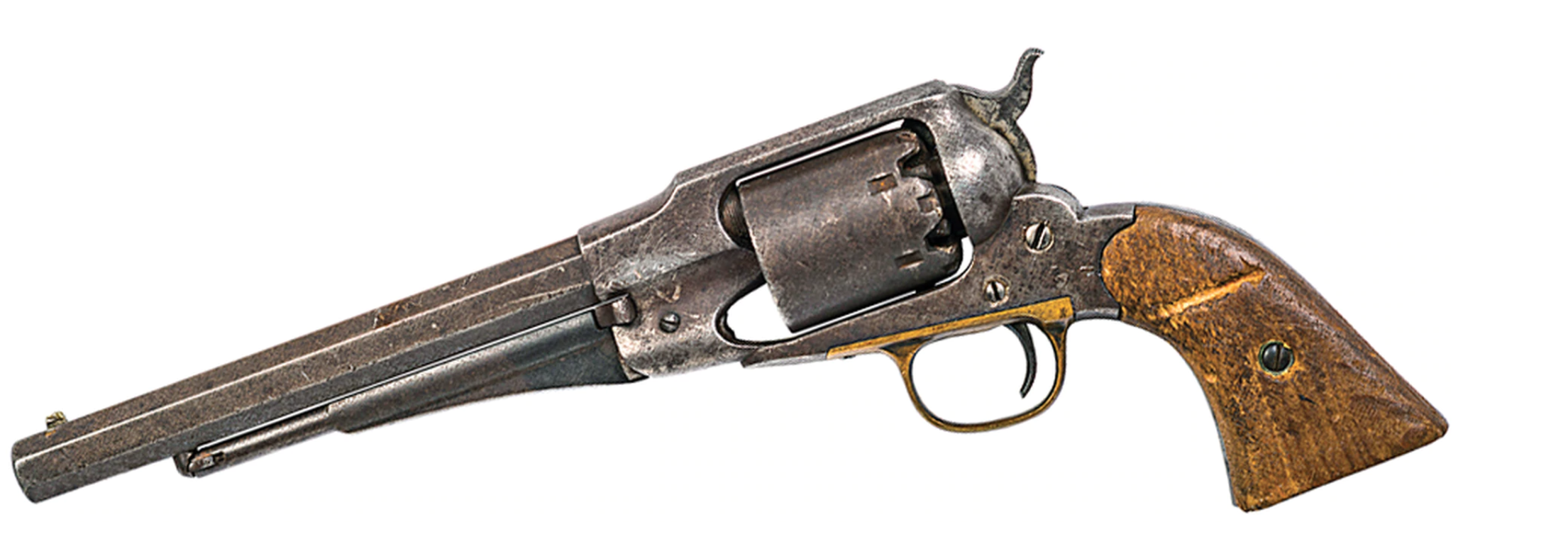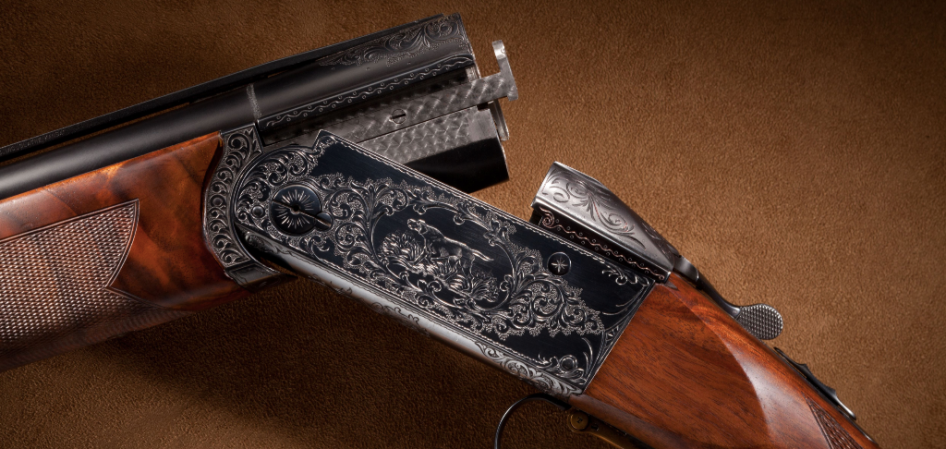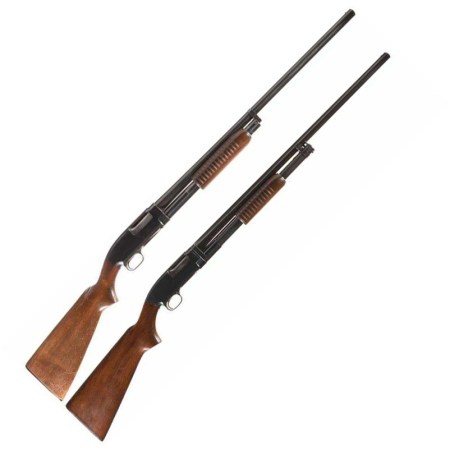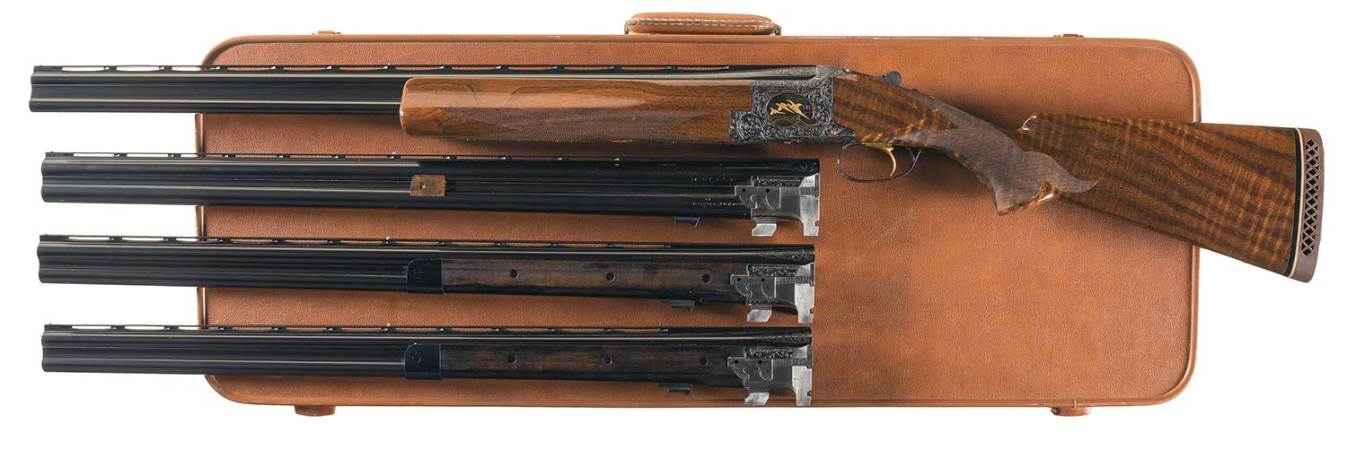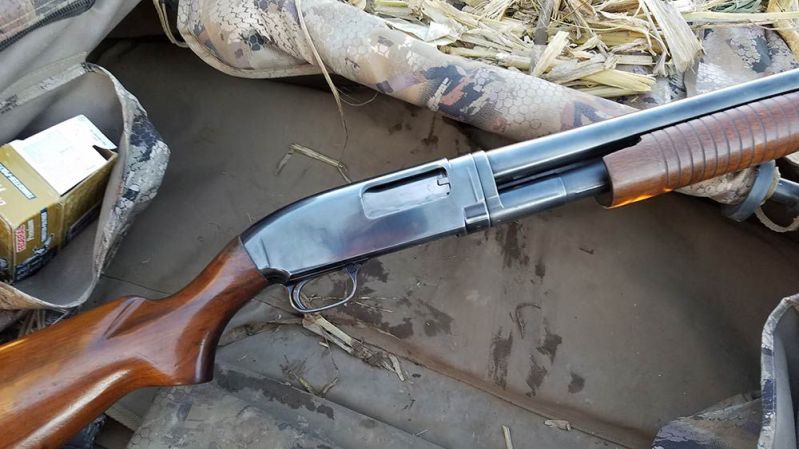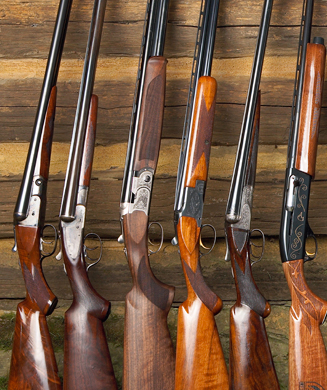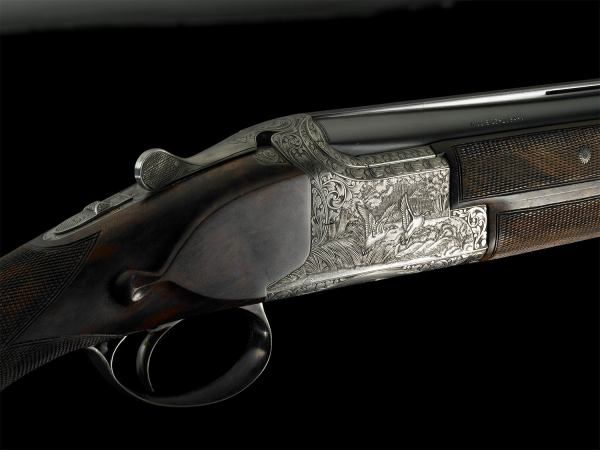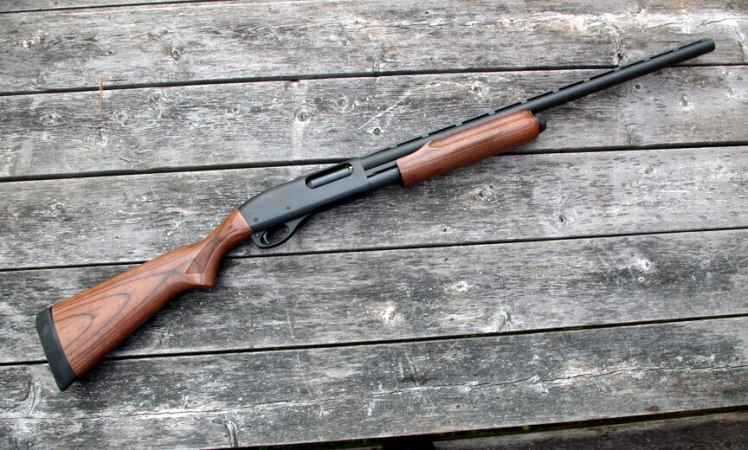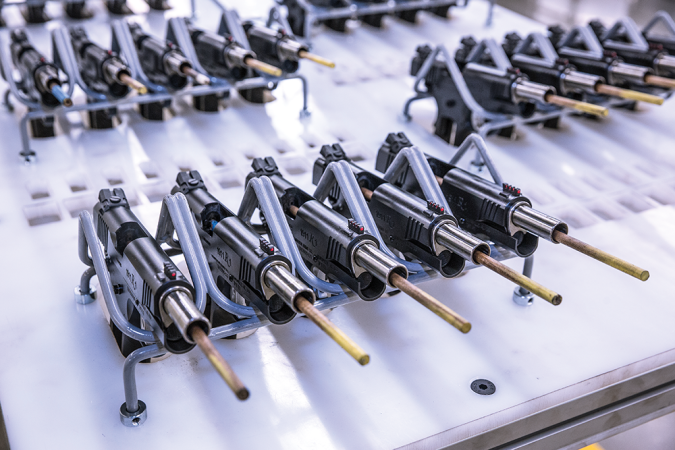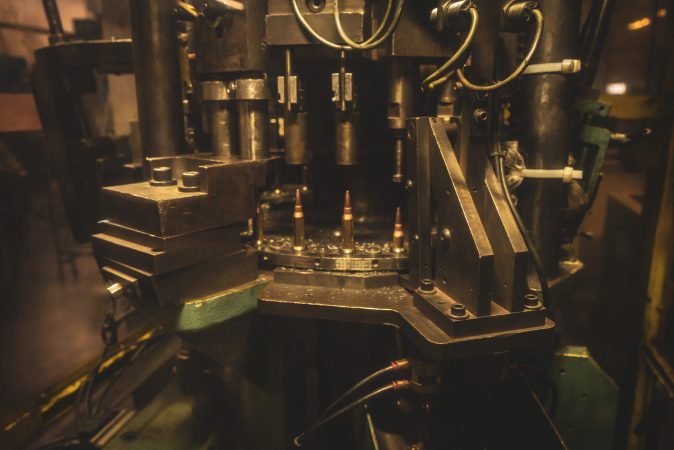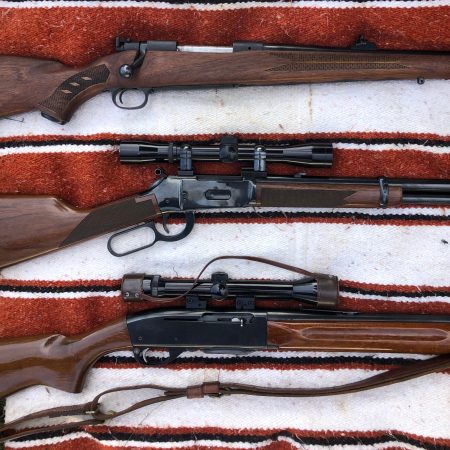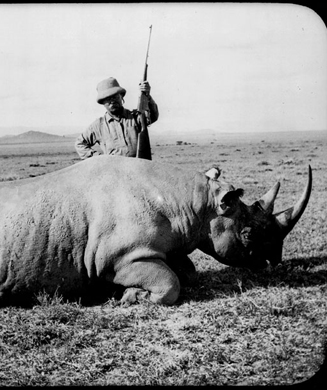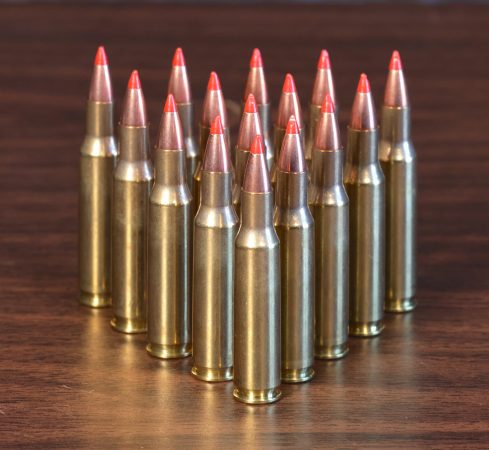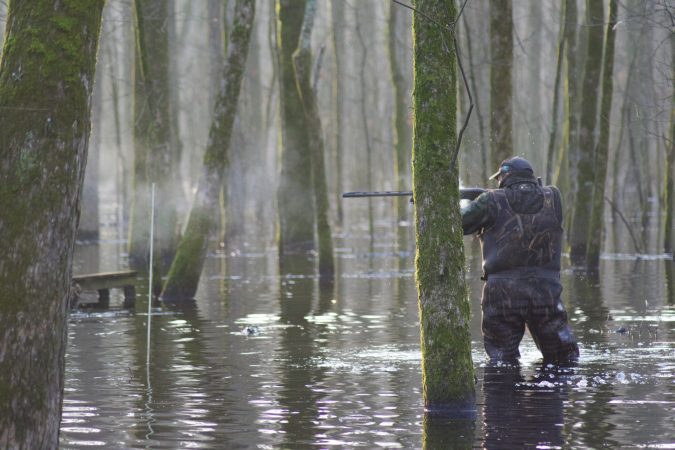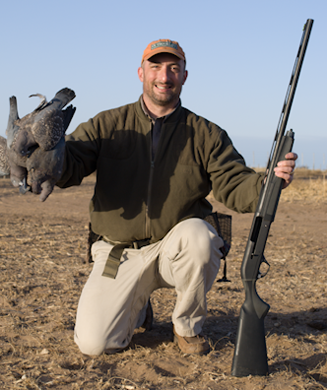We may earn revenue from the products available on this page and participate in affiliate programs. Learn More ›
The name Remington has been associated with firearms for 200 years. The company was founded in 1816, when 22-year-old Eliphalet Remington II began making rifle barrels. By the middle of the century, he was on his way to becoming a major force in the world of firearms manufacturing, along with contemporaries like Samuel Colt and Horace Smith and Daniel B. Wesson.
Remington played a significant role in defining the history of the American West, and the company impacted the world during global wars. Fast-forward 200 years. The company is now known for a wide array of sporting, self-defense, and military firearms. As the company continues to grow, it stands as a symbol of the past, present, and future of American ingenuity.
Select Notable Remington Guns Through History
Remington’s Big 5**
Everyone has their favorite Remingtons. Some people appreciate the antiques, while others trend toward recent guns for practical use. The Big 5 guns represent a snapshot of an era of change for the company.
Models 31, 870, 700, 1100, and 3200 all reflect the changing commercial market and show how Remington adapted to it.
After WWII, designers Mike Walker and Wayne Leek fostered a shift away from pre-war-style guns. The Model 31, a favorite among traditionalists and connoisseurs, represents the old guard—beautiful walnut stock, bluing, and hand-craftsmanship. The 870, 1100, 700, and 3200, however, epitomize the new era of simpler, cost-efficient, yet accurate products that come in a dizzying number of variants. This level of adaptability to diverse consumer preference has led to the company’s success.
1931
Model 31 Slide-Action Shotgun
12 Gauge
Discontinued

In 1931, the Remington Model 31 shotgun was developed as the company’s first side-ejecting slide-action. It has been offered in 12, 16, and 20 gauges. Initially, this gun was meant to compete against the Winchester Model 1912. It ultimately was phased out by the 870 and discontinued in 1949.
—
1950
Model 870 Slide-Action Shotgun
12 Gauge
In Production

The Remington Model 870 shotgun is the best-selling gun in Remington history. Introduced in 1950 to replace the Model 31, it has been produced in a vast number of variants and is still in production. Versions have been made for military and law enforcement, as well as for the traditional sporting market.
—
1962
Model 700 Bolt-Action Rifle
.222 Rem.
Discontinued

Introduced in 1962, the Model 700 rifle was the latest technological advancement in a series of Remington bolt-actions, one that employed a round-profile action. While many variants exist, it also introduced another successful Remington product—the 7mm Remington magnum.
—
1963
Model 1100 Autoloading Shotgun
20 Gauge
In Production

Following a long history of semi-automatic shotguns, starting with the Remington Model 11, the Model 1100 was instantly popular in the hunting and sporting market. Remington produced one million within the first decade. It even has been dubbed the best-selling autoloading shotgun in history.
—
1970
Model 3200 Over/Under Shotgun
12 Gauge
Discontinued

Like other firearms produced by Remington in the post-war period, the Model 3200 was made in a variety of calibers and configurations. It was discontinued in 1983, but it remains popular among clay target shooters who appreciate the way this over/under handles.
Famous Owners Over the Years**
Remingtons are ingrained in the history of the American West, thanks to the notable characters who carried them. Buffalo Bill owned several Remingtons, including a New Model Army that he got after a skirmish with Cheyenne warrior Yellow Hair. He also had a rolling-block rifle given to him personally by one of the Remington sons. His Wild West counterpart Annie Oakley carried a Remington Beals Rifle. And George Armstrong Custer used Remingtons—especially for sport.
The growth of the American West mirrored Remington’s growth. At the time, there was no better endorsement than that of key personalities more famous than the guns themselves. We saw this in the 20th century, when exhibition shooter Tom Frye used his Remington Nylon to set an accuracy record in 1959, which was formerly held by Winchester shooter Ad Toepperwein.
Annie Oakley’s Beals Sporting Rifle
Ca. 1873
.32 Long Rimfire

George Armstrong Custer’s Creedmoor Target Rifle
1870
.44 Caliber

Tom Frye’s Model 66 Nylon
1959
.22 Caliber

Buffalo Bill’s No. 1 Rolling Block Rifle
1873
.43 Spanish

Yellow Hair’s Model 1860 New Model Army Revolver
1876
.44 Caliber

The Many Minds Behind Remington’s Designs**
Eliphalet Remington II set the tone for his company when he produced the first cast-steel barrel in the United States. He was a trendsetter. As a result, the company became known for its innovation.
Remington in the mid to late 19th century was a haven for invention. The company welcomed designers from diverse backgrounds to create new and original products not restricted to firearms. Witness the typewriters and sewing machines that bore the Remington name over the years. But its firearms designers were the heart and soul of the company, even if they didn’t always profit personally. Their contributions often were acknowledged in the model names of their inventions. Some of the most iconic and surprising designs are highlighted here.
1920 Keen Sporting Rifle
.45/70 Government
Produced
Inventor: John W. Keene

John W. Keene was a firearms designer out of New Jersey who had perfected a bolt-action-system rifle and magazine. Unfortunately he didn’t have the funds to produce it. In the 1870s, he filed a patent for his design and partnered with Remington.
1850 Hepburn No. 3 Sporting Rifle
.32/40 RP
Produced
Inventor: Lewis L. Hepburn

Lewis L. Hepburn was the superintendent of Remington’s mechanical department and was a member of the Creedmoor International Shooting Team. He created a falling-block rifle, which was sold and marketed by Remington from 1880 to about 1907.
1899 Lee Model 1899 Military Rifle
.30/40 Government
Prototype
Inventor: James Paris Lee

James Paris Lee was a well-known arms inventor and designer who invented the Lee-Metford and the Lee-Enfield rifles. This bolt-action box magazine rifle was designed by Lee and manufactured initially by Sharps until Remington took over production.
1857 Thomas No. 2 Rifle Cane
.32 Rimfire
Produced
Inventor: J.F. Thomas

J.F. Thomas was an employee of Remington who designed one of the more peculiar Remington firearms—the Cane Gun. This curious design was intended to capitalize on the Victorian market of walking canes for gentry. While not a commercial success, it was the first metallic cartridge long arm made at Remington.
1857 Beals First Model Pocket Revolver
.31 Caliber
Prototype
Inventor: Fordyce Beals
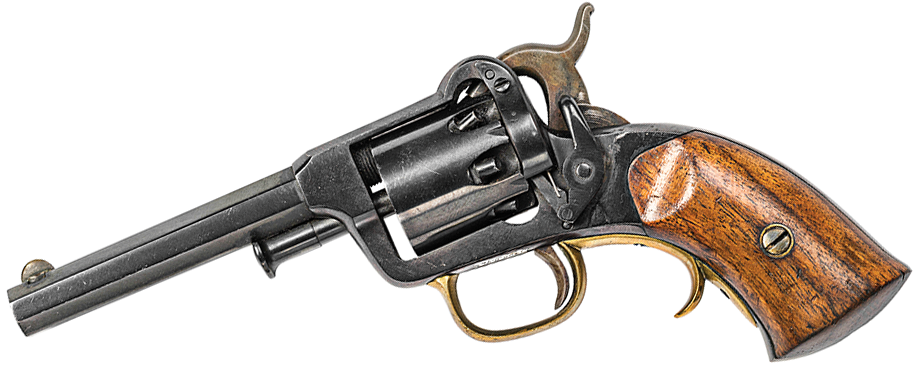
Remington’s first revolver was designed by Fordyce Beals. Not only did he design this revolver, he worked on several patents, including a rifle and most notably the famous Remington New Model Revolver. Like many designers, he did not work exclusively for Remington; he also worked for Whitney Arms.
1863 Elliot Pepperbox Derringer
.32 Rimfire
Produced
Inventor: Dr. William Elliot
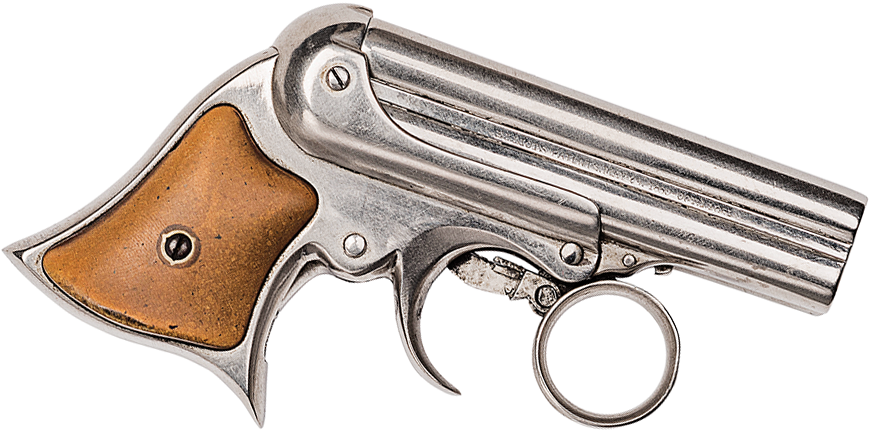
Dr. William Elliot designed many popular derringers for Remington. Inspired by Henry Deringer, this was Remington’s first crack at the concealment market. Elliot designed this four-barrel pistol, as well as over/under derringers. He would also submit several designs along with Rider and Smoot for military contracts.
1874 Smoot New Line No. 2 Revolver
.30 Short Rimfire
Produced
Inventor: William S. Smoot
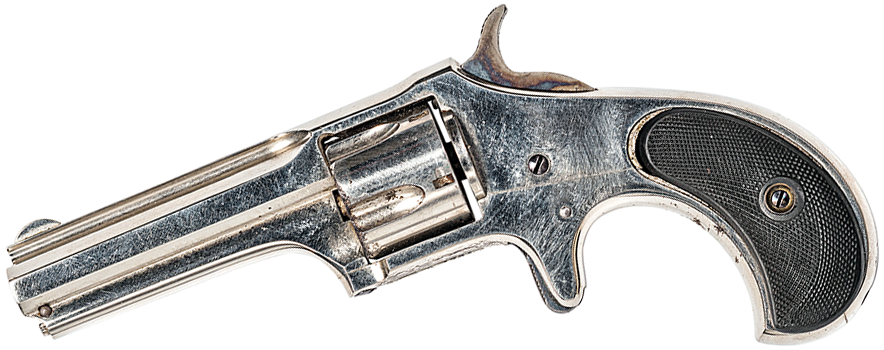
A veteran of the American Civil War, William S. Smoot received a commission in the Ordinance Department in 1864. He resigned in 1871 and became an employee of Remington. He is best known for his series of five-shot New Line Revolvers that experimented with an ivory-like substance called celluloid.
1880 Rider Magazine Pistol
.32 Extra Short Rimfire
Produced
Inventor: Joseph Rider
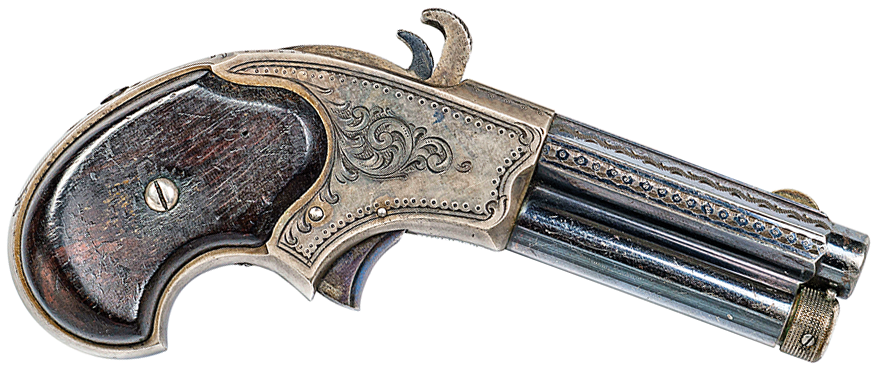
Two Remington employees, Leonard Geiger and Joseph Rider, designed one of the most iconic Remington actions—the rolling block. However, Rider had initially been hired by Remington to design pistols in the 1850s. He created a series of vest-pocket guns for the company, including this magazine pistol.
Race to the Auto Market
In 1893, Hugo Borchardt developed his semi-automatic pistol, the C-93. This was the start of the race to create the best semi-auto. Designers around the world developed their own spin on the new technology, from pistols to rifles to shotguns, and even a revolver. It was such a cutthroat market that it even contributed to the split between John Browning and Winchester.
The design that caused the breakup was Browning’s autoloading shotgun. This was a lost opportunity for Remington. It is believed Browning initially went to Remington, but on that day president Marcellus Hartley died. However, it was produced eventually as the Model 11. This was one of many autoloaders made by Remington, some more successful than others. Regardless, it has been a viable product for more than 100 years.
1970 Woodmaster 742 Rifle
.308 Win.
Discontinued

The Model 742 Woodsmaster was a semi-automatic rifle made by Remington Arms between 1960 and 1980. Like its predecessor, the Model 740, it came in many variations and calibers, starting with the 6mm Rem. In 1981, it was used as a template for the Model 7400.
1922 Model 24 Rifle
.22 LR
Discontinued

The Remington Model 24 Semi-Automatic Rifle was produced between 1922 and 1935. This .22-caliber rifle was made from a John Browning design. Initially offered in .22 short rimfire, it was quickly offered in long rifle as well. There were several grades of Model 24s offered during its relatively short run.
1905 Model 11 Shotgun
20 Gauge
Discontinued

The Remington Model 11 semi-automatic was a recoil-operated shotgun designed by John Browning. It is based on Browning’s 1900 patent, which was sold to Fabrique Nationale. Ultimately Remington acquired the rights to produce the gun in the States. It was nicknamed “hunchback” due to its appearance.
1906 Model 8 Rifle
.25 Rem.
Discontinued

The great Model 8 was a semi-automatic centerfire rifle. It was originally introduced in 1906, but the name was changed from Remington Autoloading Rifle to the Model 8 in 1911. It, too, was designed by John Browning and has been chambered in many calibers, including the .25 Remington.
1936 Model 81 Rifle
.32 Rem.
Discontinued

More than 80,000 Model 8s were produced before 1936. After it survived the great depression, Remington decided this gun needed an upgrade. Introduced in 1936, the Model 81 was born. It had a heavier pistol grip stock and several cosmetic changes. The Model 81 was produced until 1942, when America’s involvement in World War II shifted production focus.
Remington During World War I
At the onset of World War I, Remington had few military arms beyond rolling blocks and a 1911 pistol. By the end of the war, it would have military weapons of various types all over the world. Initially, France purchased and rechambered its rolling blocks. In 1914, England contracted the company to produce Pattern 14 rifles in .303. In 1915, Russia contracted Remington for Mosin Nagants. And in 1917, the United States looked to Remington to make modified U.S. Model 1903 Rifles and Pedersen devices.
Mosin Nagant Rifle

Ca. 1915
7.62×54 Cartridge
Model 1917 Eddystone Rifle

1918
.30/06 Springfield
Model 1911 Pistol
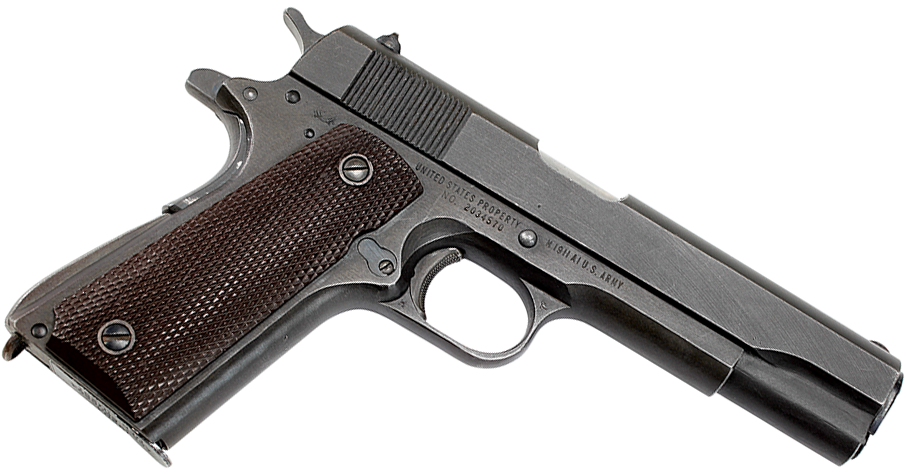
Ca. 1911
.45 ACP
U.S. Model 1903 With Pedersen Device

Ca. 1917
.30/06 Springfield
Model 10 Trench Shotgun

1907–1929
12 Gauge
Use of the images in this story was made possible by the Cody Firearms Museum, Buffalo Bill Center of the West, and the NRA Museums, along with the following donors: Olin Corporation; Winchester Arms Collection; Remington Arms Company; American Heritage Center, University of Wyoming; Mr. and Mrs. Harry Schloss in memory of Moses Kerngood; Dr. Robert Cronebaugh; W.C. Musser; and Mrs. Barbara M. Hassrick._ ––Ashley Hlebinsky
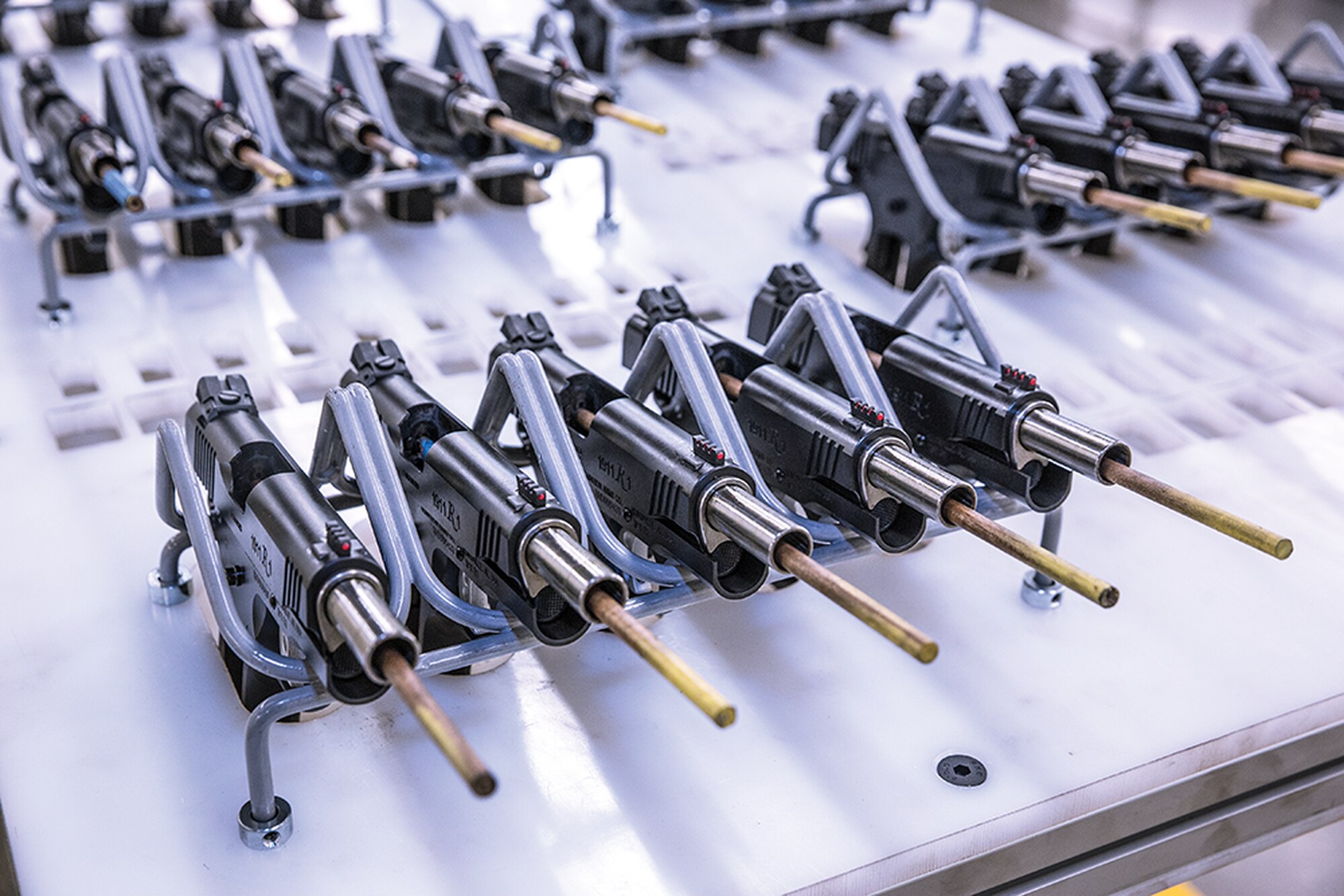
History and Industry in a Tour of Remington’s Two Flagship Plants
My Yankee dad told me he didn’t fully understand my Dixie mother until, years into their marriage, he visited her childhood home in Georgia. There, among the magnolia trees, porch swings, and syrup-thick accents, he recognized the origin of her love of gardens, Sunday dinners, and Coca-Cola.
I had a similar rediscovery as I walked the creaking wooden floors of Remington’s factory in Upstate New York last winter. My first rifle, a Model 510 TargetMaster single-shot .22, was born in this sprawling facility, and every whiff of solvent-heavy air and glimpse of rough-cut stock blanks reminded me of the burnished metal and oiled walnut of my rimfire, which for the second decade of my life was my only beloved gun.
When I returned home from my tour of Remington’s million-square-foot Ilion, N.Y., facility, I researched the origin of my TargetMaster. It came off Ilion’s production line in 1947, one of a generation of firearms that helped Remington transition from producing 1903A3 Springfields for American soldiers to turning out millions of guns for rabbit, quail, and deer hunters back home.
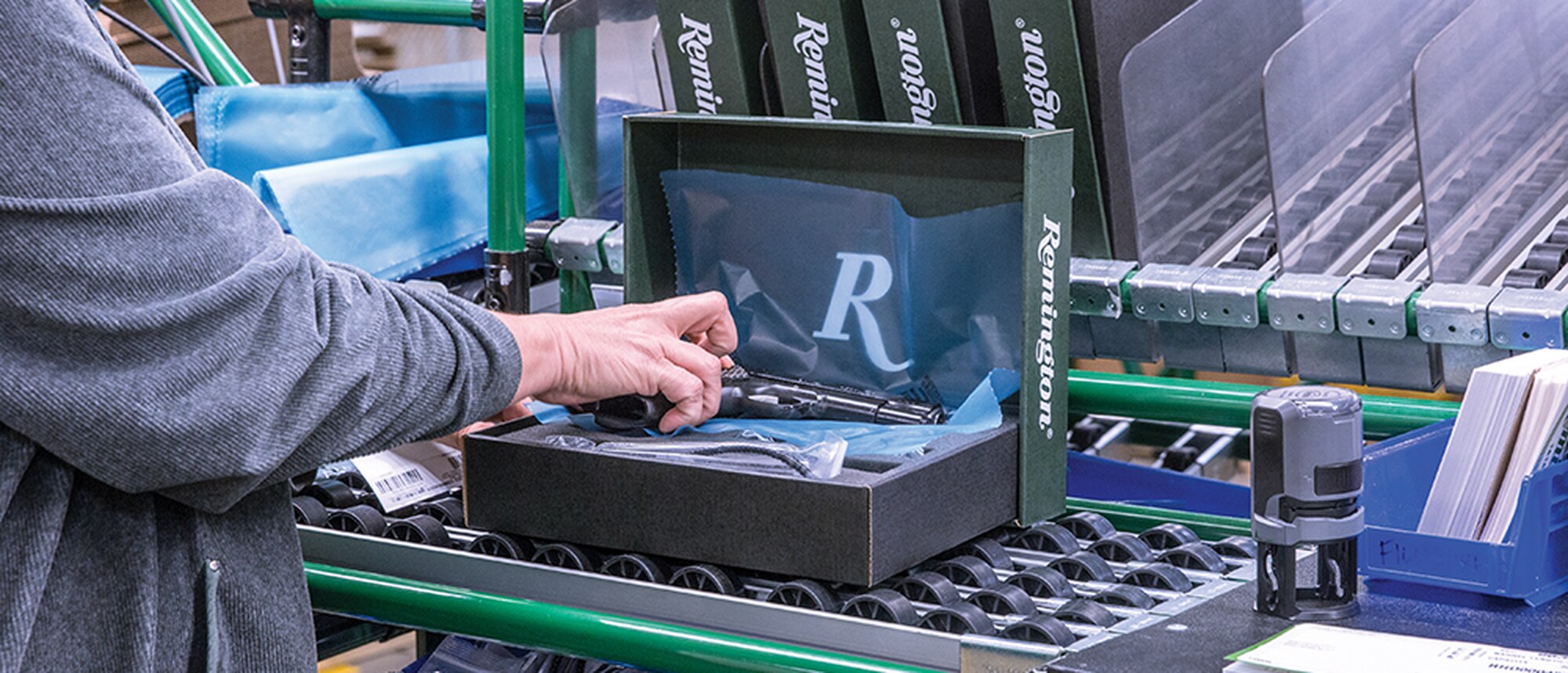
I can almost picture my little rifle—the gun that shot open a tin of pork-and-beans on my first campout when my friend Doug forgot the can opener, the gun that got me in trouble with my mom for shooting ripe tomatoes off the vines in her garden, and the gun that made me a hunter—rolling off Remington’s assembly line and being tucked into a crate as barges waited just outside the brick walls of the factory to float finished firearms down the Erie Canal to be distributed to the gun-store counters of Cold War America.
In the 69 years since my rifle’s birth, the Erie Canal has been filled in. Freedom Group, the parent company of Remington, has moved much of its firearms production to the Deep South. Remington no longer makes single-shot .22s. And handguns and ARs have replaced bolt rifles as Big Green’s line leaders. But the Ilion plant, hulking above the hardwoods and chimneys of New York’s Mohawk Valley, still chugs and throbs with the earthy energy of gun production.
Four Floors of Guns
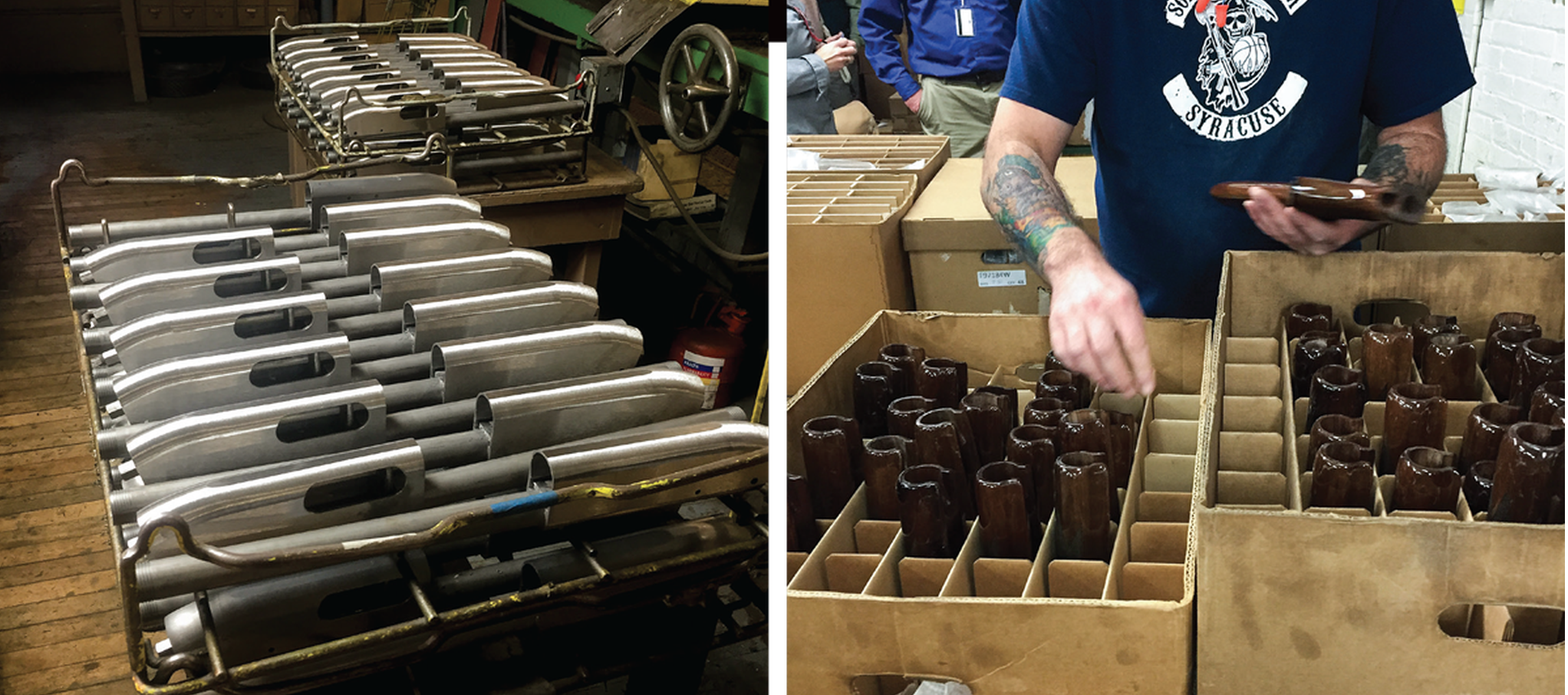
The Ilion factory was built in 1915 to ramp up production of government-issue rifles in anticipation of World War I. The four-story building sits on property purchased by Eliphalet Remington II in 1828 as the second site for his rifle-barrel-making mill. The original Remington facility, like its successor, was close to the Erie Canal, which meant access to downstream markets. In pre–Civil War America, central New York was the center of the industrial universe.
The brick-faced factory looks its age. Its high windows are smudged with soot. Floors are plank-sawn oak from the nearby hills. Its high ceilings are stamped tin.
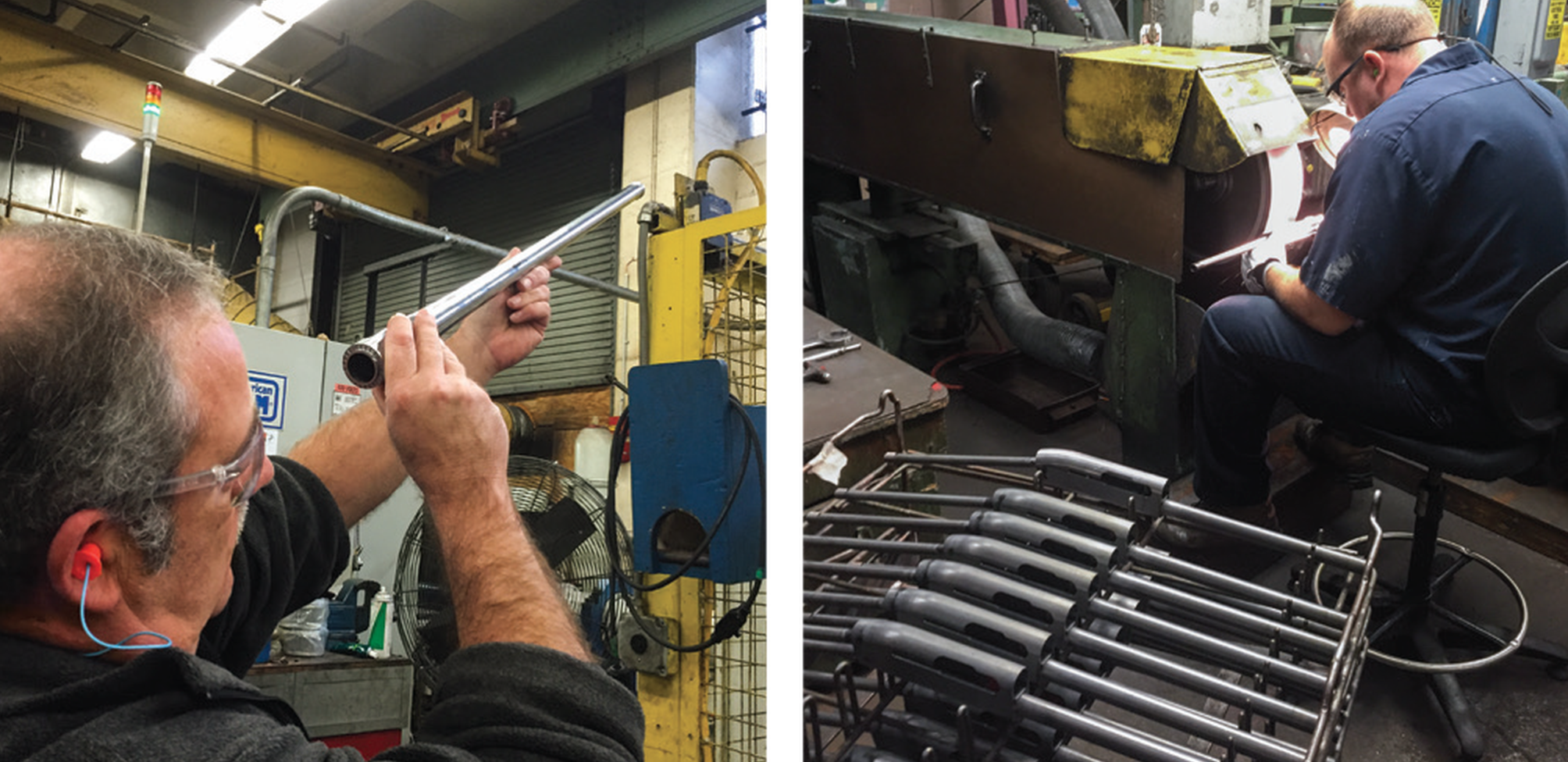
That’s not to say the Ilion plant is all rasps and cold chisels. Gleaming CNC milling machines line the floors, and workers (Remington employs some 1,300 hourly laborers here, most members of the United Mine Workers of America) are as likely to be studying a computer monitor as a dial caliper.
The collision of the modern and nostalgic extends to the product line. Most of Remington’s 11 million Model 870 pump-action shotguns were built here, and they’re still being turned out on a floor below the Model 700 bolt-action rifle production line. But new models are produced here, too. Around the corner from where workers grade and sort gleaming VersaMax barrels, new V3 shotguns are assembled and boxed.
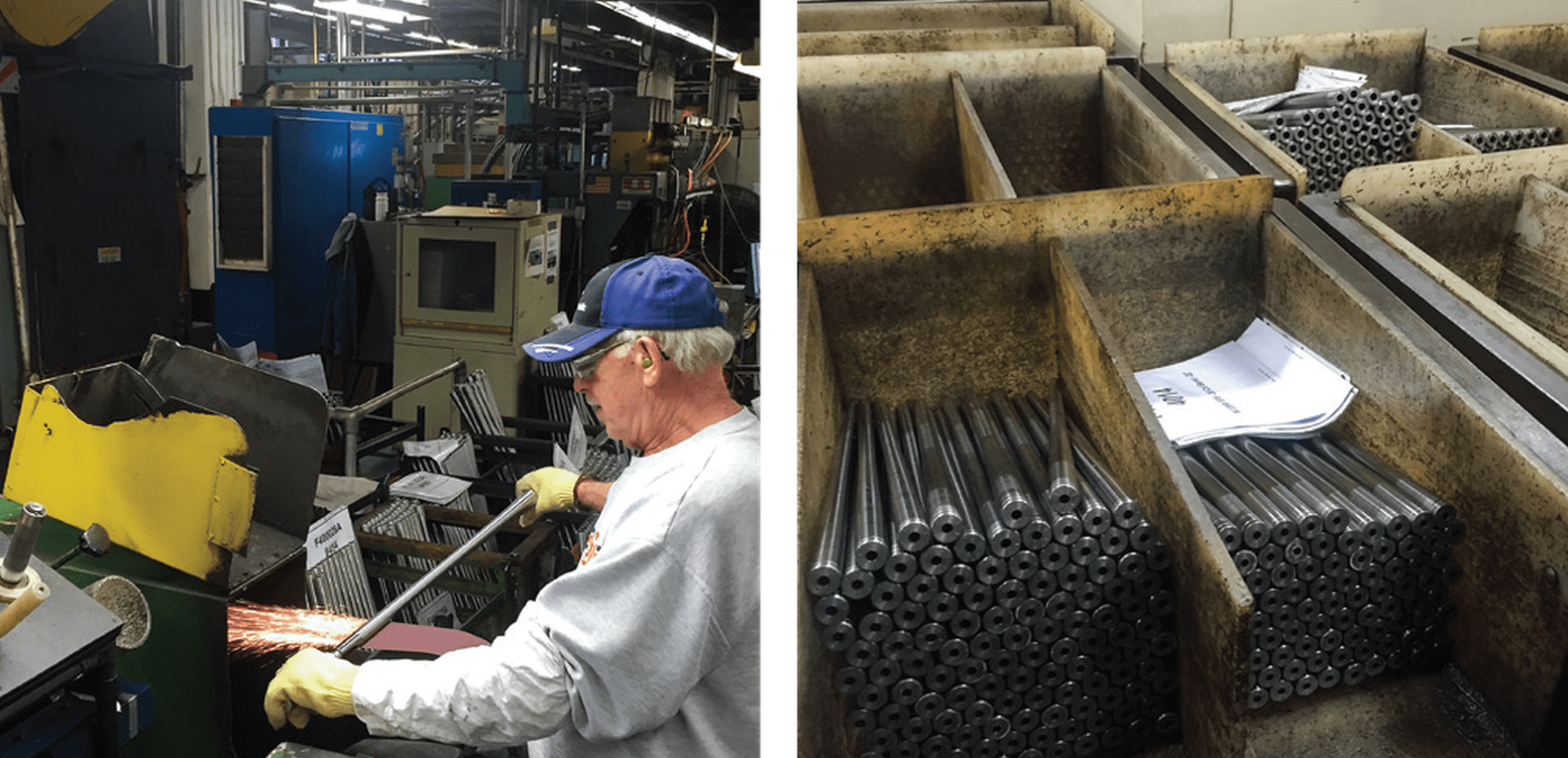
But there’s a sunset feel about the Ilion plant. Retired lathes and decrepit milling machines are wedged in corners. The overhead lights are a little dim. The future is a little murky here, as one by one Remington product lines are being moved to other facilities in the Big Green galaxy.
Gleaming City of Guns
In the last year or two, many of those lines have been relocated to Huntsville, Ala., where Remington has converted a former Chrysler auto plant into a state-of-the-art firearms production facility.
If Ilion is wood smoke and gear grease, Huntsville is diodes and motherboards. The linoleum floors sparkle under high-intensity industrial lighting, and the CNC milling units hum with assured precision.
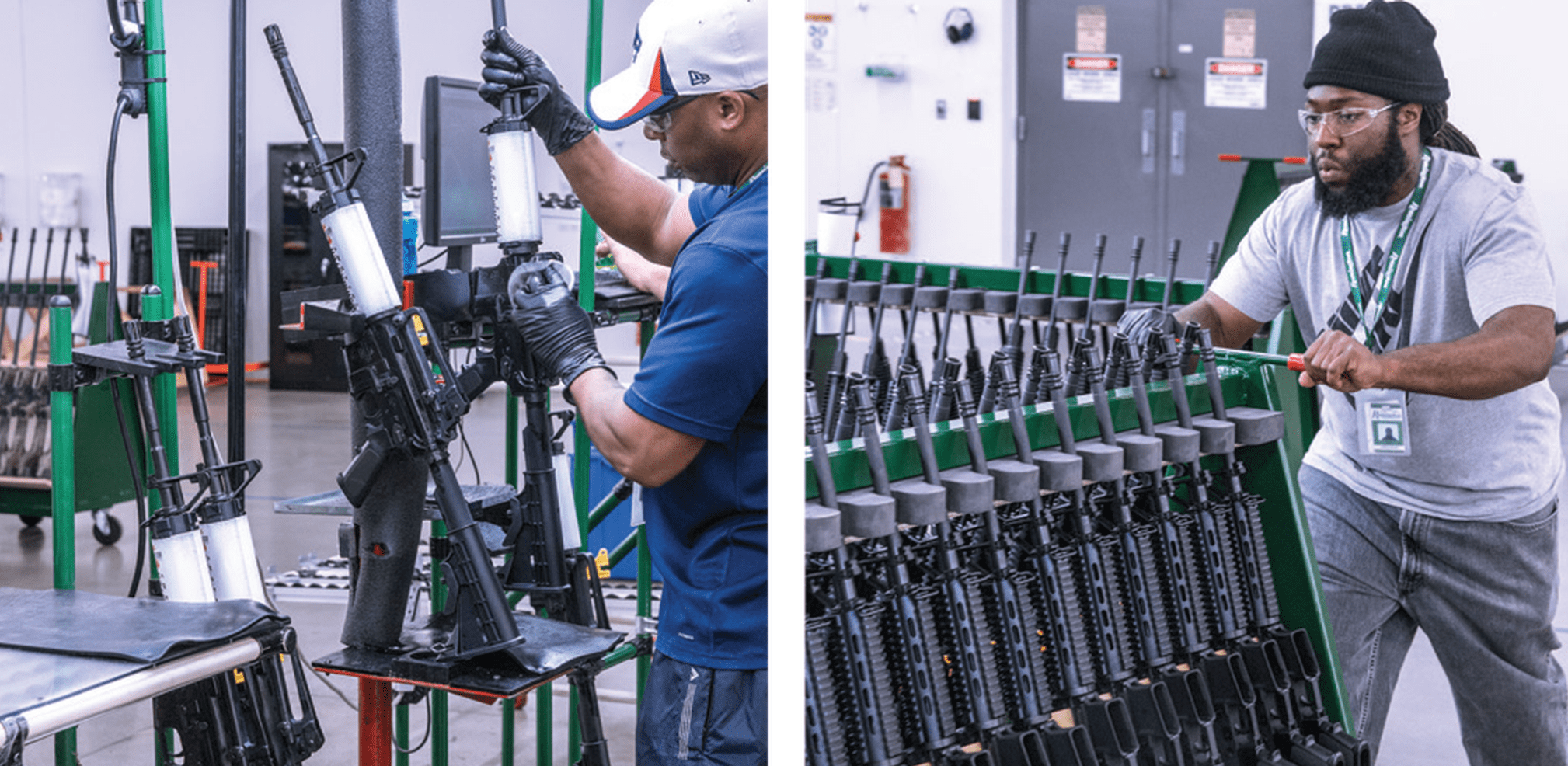
The products produced in Huntsville reflect the high-tech facility. When I visited in December, there wasn’t a stick of walnut or a hand-lapped receiver in sight. Polymers and laser etchings dominate the gun models, from the Bushmaster series of semi-automatic rifles to the RM380, Remington’s micro pistol, and the full-size 1911 R1. In a distant corner of the 570,000-square-foot facility, Advanced Armament Corp. suppressors are milled beneath a huge flag depicting the brand’s skull-and-AR logo.
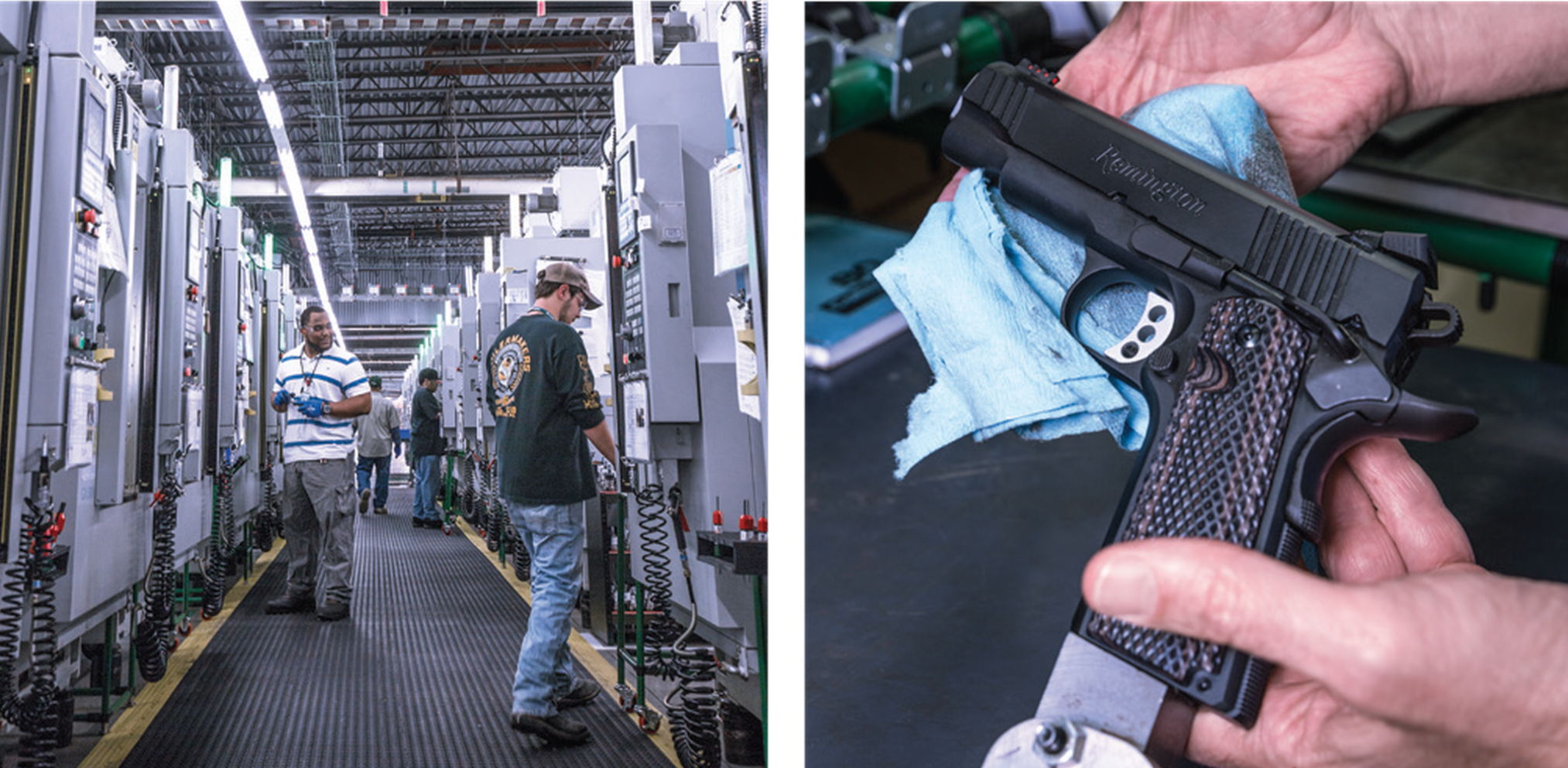
Owing to the density of high-tech companies in the area, Huntsville reportedly has the highest per capita population of engineers in America, and it’s easy to believe most of them work at Remington. In 2015, Big Green’s workforce here numbered only 350, but it seemed to me every employee had a specialty: prototyping, materials testing, ballistics, electronics calibration.
Beyond the rows of production machinery, at least half the factory floor stretched, empty and waiting, hungry it struck me, for Remington’s next century of gun production. ––Andrew McKean
